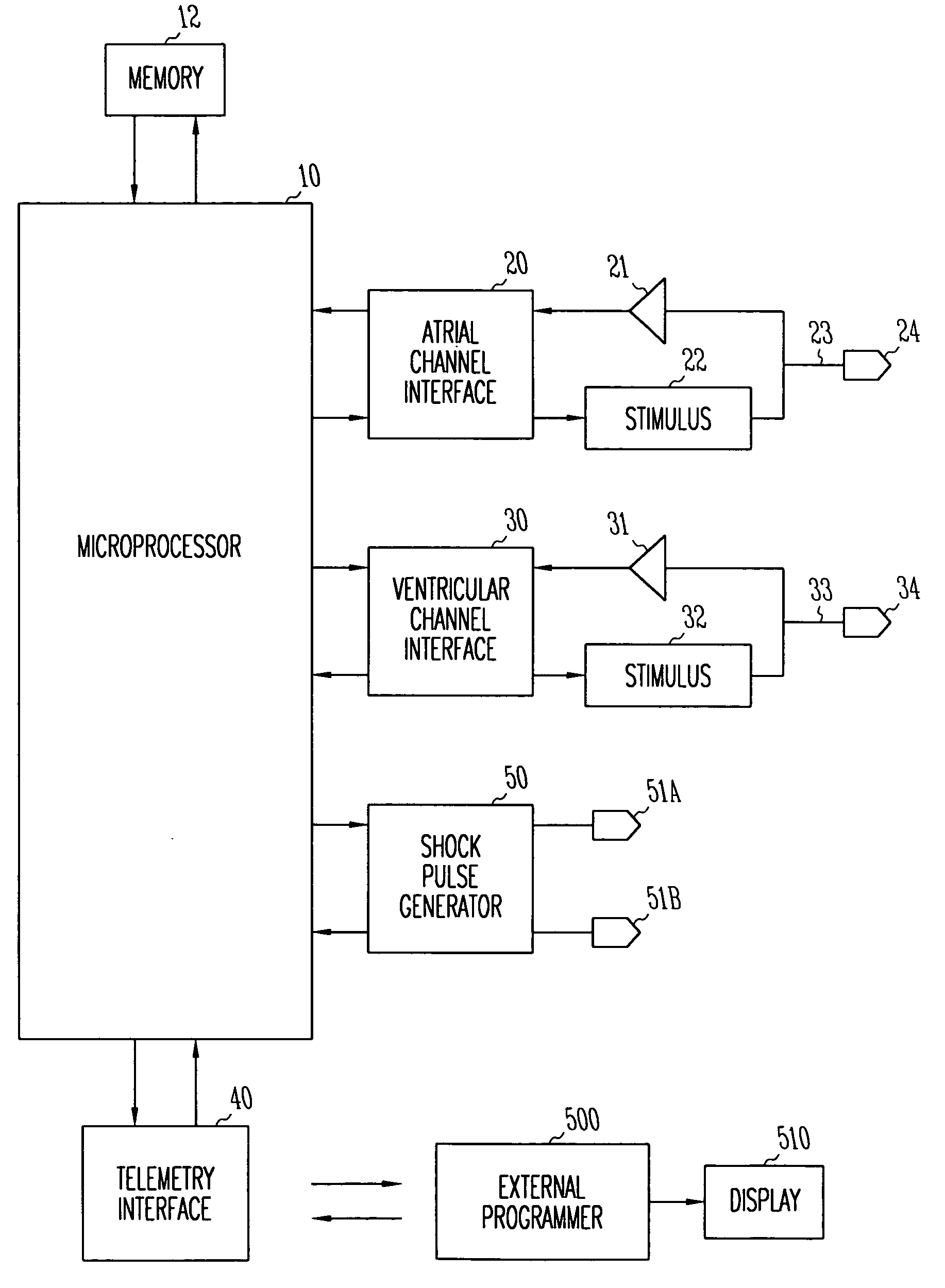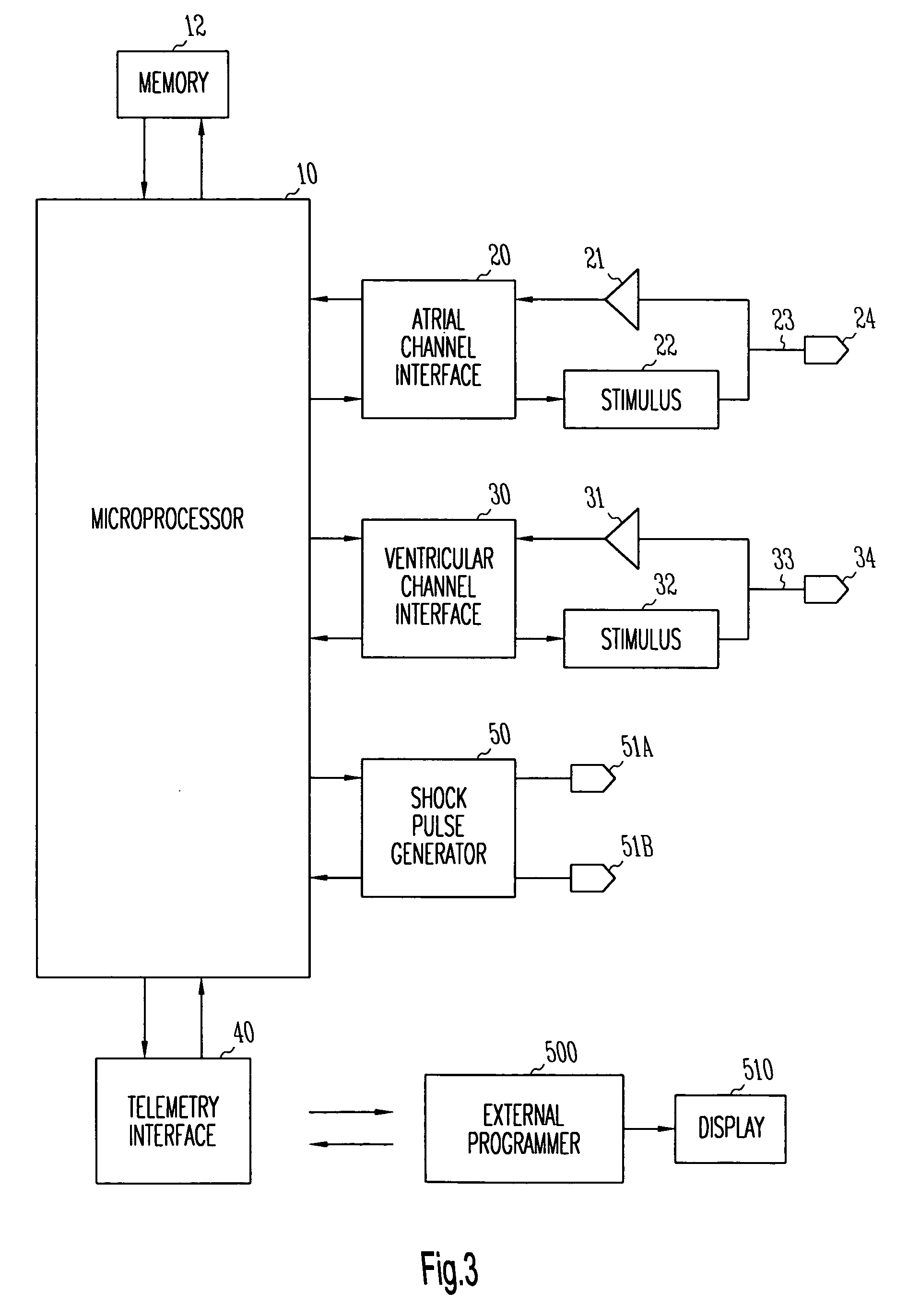Algorithm for discrimination of 1:1 tachycardias
a tachycardia and algorithm technology, applied in the field of algorithms for discriminating 1 tachycardias, can solve the problem that the relative va and av interval magnitude cannot be reliably used to distinguish svt from v
- Summary
- Abstract
- Description
- Claims
- Application Information
AI Technical Summary
Problems solved by technology
Method used
Image
Examples
Embodiment Construction
[0017]For the reasons stated above, accurate discrimination of 1:1 tachycardias would be a very useful capability for an ICD. Much of the previous research that has been done in this area has relied on signal morphology to distinguish between SVTs and VTs where the morphologies of the individual electrogram waveforms are analyzed. Morphology based methods have shown promise, but these methods require computational complexity that may be beyond the capability a small battery powered device such as an ICD. The present invention, on the other hand, is a computationally efficient method for discrimination of 1:1 tachycardias that is relies upon the relative variability of measurable intervals that may be readily implemented in an ICD. In what follows, the algorithm will be described in detail and its physiological basis explained.
[0018]1. Physiological Basis
[0019]In normal sinus rhythm, which is a supraventricular rhythm, the electrical impulse begins from spontaneous depolarization in ...
PUM
 Login to View More
Login to View More Abstract
Description
Claims
Application Information
 Login to View More
Login to View More - R&D
- Intellectual Property
- Life Sciences
- Materials
- Tech Scout
- Unparalleled Data Quality
- Higher Quality Content
- 60% Fewer Hallucinations
Browse by: Latest US Patents, China's latest patents, Technical Efficacy Thesaurus, Application Domain, Technology Topic, Popular Technical Reports.
© 2025 PatSnap. All rights reserved.Legal|Privacy policy|Modern Slavery Act Transparency Statement|Sitemap|About US| Contact US: help@patsnap.com



